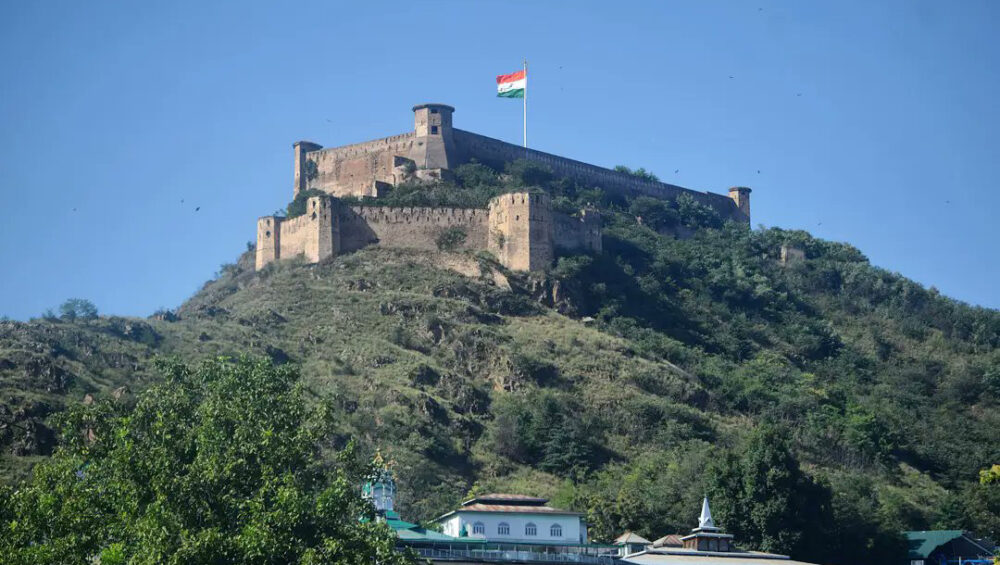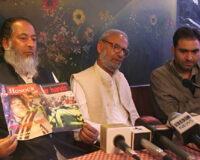On November 8, Srinagar, the summer capital of the disputed territory of Jammu and Kashmir was selected among 49 cities worldwide to join the United Nations Educational, Scientific and Cultural Organization UNESCO’s creative cities network (UCCN).
UCCN secretariat is administered by UNESCO, which ensures the network’s management at the global level. The initiative provides support to member cities through guidance, capacity-building materials, and opportunities for participation and collaboration, as well as promotes the network’s visibility through communication and advocacy, particularly at the international level.
In 2018, UNESCO denied a creative city consideration request for the Srinagar city. This year’s selection was approved after Srinagar Municipal Corporation (SMC) – a municipal body, in coordination with the Indian National Trust for Art and Cultural Heritage (INTACH) submitted a dossier, on Art and handicrafts, which is the major source of livelihood for many artisans in the valley. Kashmir’s arts and crafts such as handicrafts, shawls, papier-mâché, and woodwork etc. have been inherent to Kashmir’s culture for centuries generating livelihood for generations.
The ‘creative city’ tag may look good for the indigenous artisans. However the region with diverse cultures has been ravaged by the ongoing-armed conflict and the political dispute since 1947. When Indian colonial war machine arrived in the region, the city and the whole region witnessed devastating consequences on the local culture as well as the transformation of its art. Looking at the work of artists in Kashmir, one can notice how conflict, militarization, mourning, and defiance have come to influence their work.
Amid all the daily killings and human rights violations by the state and its Hindu extremists and their leaders are promoting UNESCO’s ‘creative city’ tag as ‘a diplomatic win’.
Indian Prime Minister Modi tweeted, “Delighted that beautiful Srinagar joins the UNESCO Creative Cities Network (UCCN) with a special mention for its craft and folk art. It is fitting recognition for the vibrant cultural ethos of Srinagar. Congratulations to the people of Jammu and Kashmir.”
The tweet followed by Indian Ministry of External Affairs Ministry, called it a “Moment of Pride for India”. A good number of Indian Hindu extremist, their offshoots and embedded journalists started calling it a ‘diplomatic win’ for India.

But is this really a diplomatic win?
Although there should be no room to politicise UNESCO’s UCCN, its aim and agenda which are clearly linked with the Sustainable Development Goals (SDGs), making cities and human settlements comprehensive, safe, resilient, sustainable, socially inclusive, etc.
Srinagar has been the resistance bastion against the communal military occupation of the Muslim majority territory for more than 70 years.
UNESCO’s conventions safeguard world culture, a natural heritage in armed conflicts. So a decision to include a city on the list at the request of a colonial state has no bearing on the legality of the dispute.
Let’s question of site or city found on a disputed territory
The question creates two potential scenarios. The first is that if a State claims sovereignty and has effective control over territory ‘X’, such a territory could be applicable to be updated on the site of the World Heritage List.
The second scenario involves applications made by any state ‘B’ which has a claim on the territory ‘X’ on which the site is found but does not have effective control over it.
The Legal reference in the “convention concerning the Protection of the World Cultural and Natural Heritage sites” in a disputed territory is found in Article 11(3) of the Convention which states:
“…The inclusion of a property situated in a territory, sovereignty or jurisdiction over which is claimed by more than one State shall in no way prejudice the rights of the parties to the dispute.”
The above Article clearly speaks nothing about whether applications of both types can be considered by UNESCO. It only explains that a decision to include a place on the list at the request of a State that has a territorial claim has no implication on the legal rights of any of the parties to the dispute.
Assuming if Pakistan, the contesting party of the 74-year-old dispute takes up the prevention of Historical sites in Indian occupied Kashmir or the issue of Historical mosques or cultural sites which are on the verge of devastation due to militarization. (Art. 6) of UNESCO applies here, which says, even if UNESCO decides to include a site found on a disputed territory at the request of a state which does not have control over the territory, the State in control of the territory is still required to uphold its obligation to cooperate with UNESCO.

There is nothing in the language of the Convention that prevents States from applying to include such sites on the World Heritage List if they do not have effective control over it. The aim of the Convention is to protect and preserve cultural and natural sites, which have universal heritage value.
This aim may be emphasized when a site is found on disputed territory and the danger of its destruction increases because the state controlling the territory may deliberately try to destroy those sites that are of value to other contesting State.
In 1981 Jordan filed an application to include the Old City of Jerusalem and its Walls before UNESCO. On that occasion too, Israel who had effective control of the relevant territory opposed the application (this, by the way, was the straw that broke the U.S. camel’s back in the 1980s, triggering its withdrawal from UNESCO for twenty or so years). Therefore accepting applications from State Parties concerning sites situated in the disputed territory over which the applying state has no control is not a common practice by UNESCO.






